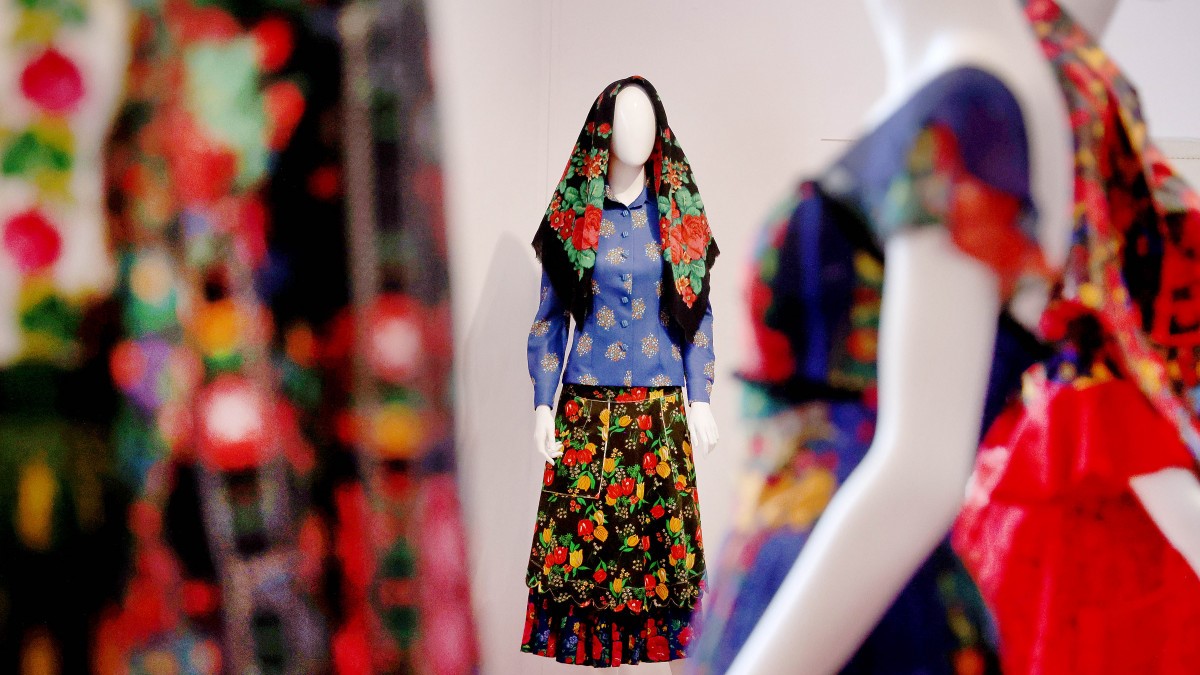As part of a showcase of clothing designed by the Romani Design Roma fashion studio, the Brussels Liszt Institute opened its autumn event series on Wednesday with an exhibition titled OUR ROOTS IN US.
Speaking to journalists, Zsófia Kovács, Director of the Brussels Liszt Institute, stated that the exhibition is about identity in today’s diverse world. She emphasized that the prominence of Roma culture in the Institute’s programme serves as a reminder that Hungary was the first country to create a Roma strategy in 2011 and took the initiative to elevate the cause of Roma culture to a European level.
‘Romani Design not only preserves values but also looks to the future, as its designers include not only Roma women but also Hungarian thinkers, social scientists, and entrepreneurs. This is why it is important to showcase this aspect of our country and Hungarian culture,’ stated Zsófia Kovács stated.
Lili Kriston, curator and artistic manager of Romani Design, told MTI that the Brussels exhibition is significant both as a cultural mission and an event that strengthens the country’s image. She added that the exhibition allows the Brussels audience to become acquainted with Roma culture and the artistic concept of the designers. The exhibited garments represent the dual identity of the Roma, as Lili Kriston highlighted that Roma communities always possess the identity of the nation that hosts them in addition to their own. The dual belonging to both the Roma and Hungarian communities is a defining feature of Romani Design’s identity. The exhibited garments and designs demonstrate that values created in the cultural sector have a future, the artistic manager emphasized.
Liszt Institute Brussels ׀ Liszt Intézet Brüsszel
𝗥𝗼𝗺𝗮𝗻𝗶 𝗗𝗲𝘀𝗶𝗴𝗻 𝗲𝘅𝗵𝗶𝗯𝗶𝘁𝗶𝗼𝗻 𝑂𝑈𝑅 𝑅𝑂𝑂𝑇𝑆 𝐼𝑁 𝑈𝑆 * 28/08/2024, 7PM 𝑹𝒆𝒈𝒊𝒔𝒕𝒓𝒂𝒕𝒊𝒐𝒏: https://forms.gle/BHoq4744pgr6fgPP7 🌼✨Romani Design is the world’s first Roma fashion studio. The founding designers, Erika…
The Romani Design fashion and design brand was founded in 2010 with the aim of contributing to the social and cultural prestige of the Roma community. Their products present Roma folk art and cultural heritage, as well as its connections to Hungarian culture, in a modern context.
The exhibition at the Brussels Liszt Institute focuses on the petticoat, a key piece of traditional clothing across Europe. The petticoats, characteristic of both Carpathian Basin women’s folk costumes and Roma clothing culture, are made of natural cotton and come from the private collection of Romani Design’s designers. The exhibition also features traditional, yet still worn, garments of Roma women from Hungary and Transylvania, including pleated skirts composed of an apron and a separate skirt part, as well as antique, museum-worthy cashmere skirts and ‘kretinca’ aprons. Romani Design’s own handcrafted fabric patterns incorporate the Marian devotion, which holds special significance in Roma communities, the Carpathian Basin’s textile cultural heritage, particularly the blue-dye technique, and stylistic elements of Roma clothing culture.
Related articles:








